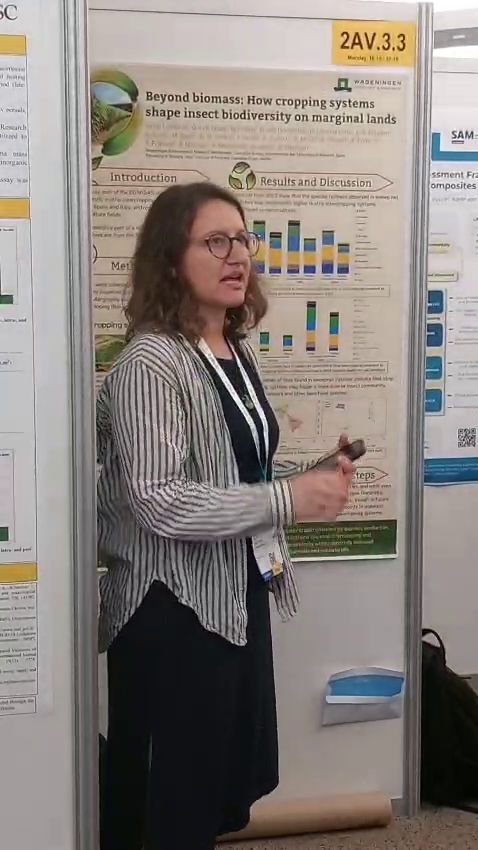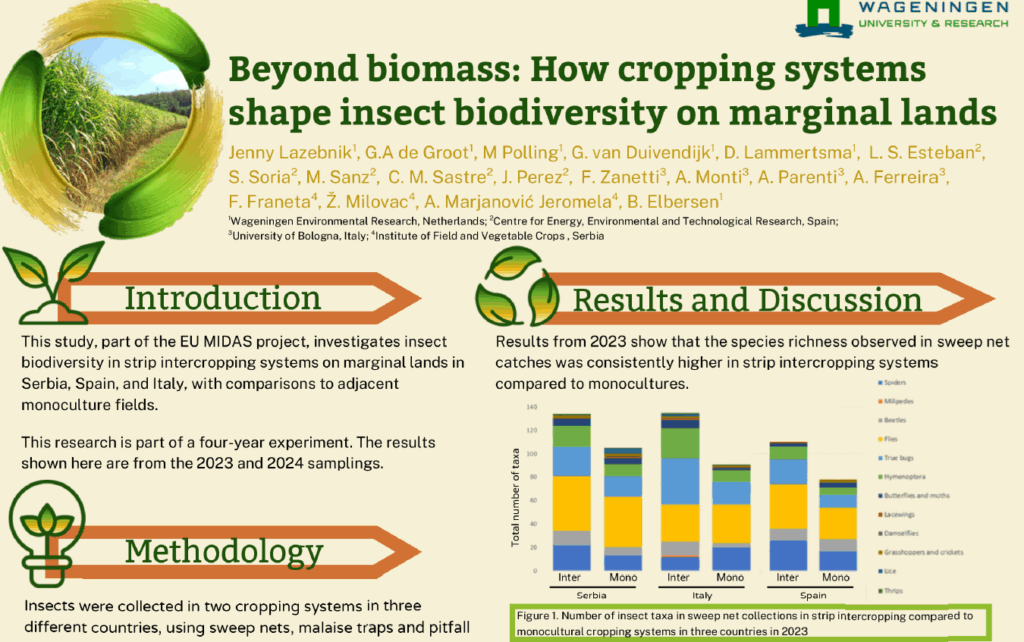In the MIDAS project, we believe in cultivating more than just biomass on marginal lands—we’re cultivating biodiversity. Our mission is to develop climate-resilient farming systems that produce materials for bio-based products while actively enhancing the agroecosystems.
Our recent post on agroforestry biodiversity was just one glimpse into this story. It’s all part of a comprehensive, multi-year assessment led by our partners at Wageningen University & Research across all our European field trials. This study compares insect populations in innovative systems like strip cropping versus traditional monocultures.
We are now in year three of the study, and the latest results are being analysed. However, we’re excited to share the preliminary findings from the first two years, which were presented by Jenny Lazebnik in a scientific poster at the European Biomass Conference and Exhibition (EUBCE) last June.

📈 The results from the strip cropping trials show a clear and consistent trend: Across all study sites, the number and diversity of insect species were consistently higher in fields with strip intercropping than in the control fields with monocultures of traditional crops. By mixing rows of industrial crops like safflower, hemp, and miscanthus, these systems create more complex habitats, fostering a richer community of beneficial insects and vital pollinators.
Besides contributing to a robust, multi-national dataset on the ecological benefits of diversifying agricultural landscapes, these findings support MIDAS view that value chains for bio-based products can be a driver for enhancing biodiversity, especially on marginal lands at risk of abandonment.
Stay tuned as we continue to analyze these results and explore biodiversity indicators in the MIDAS project.


